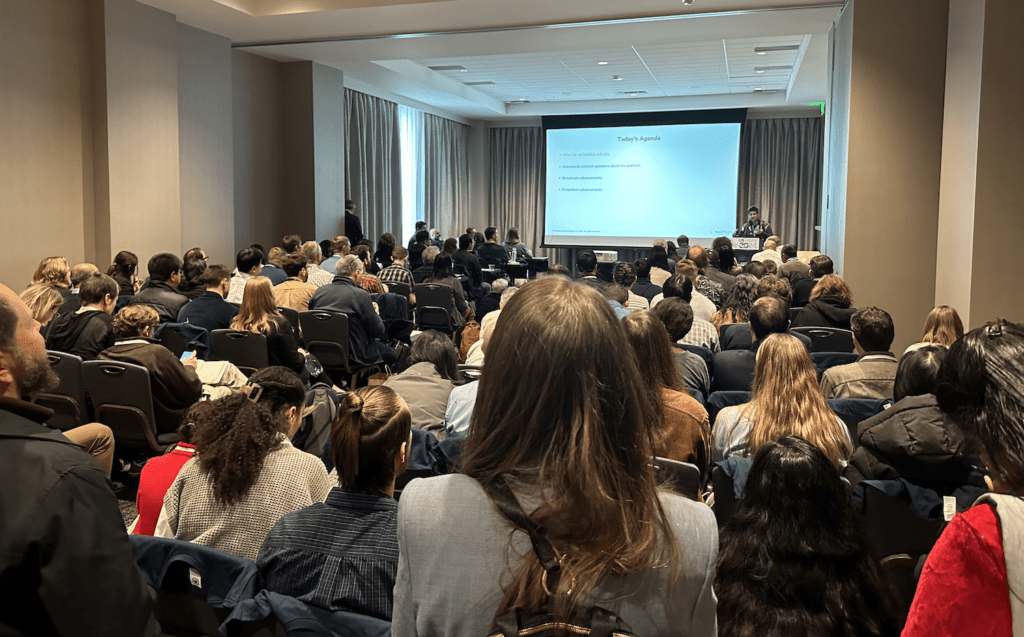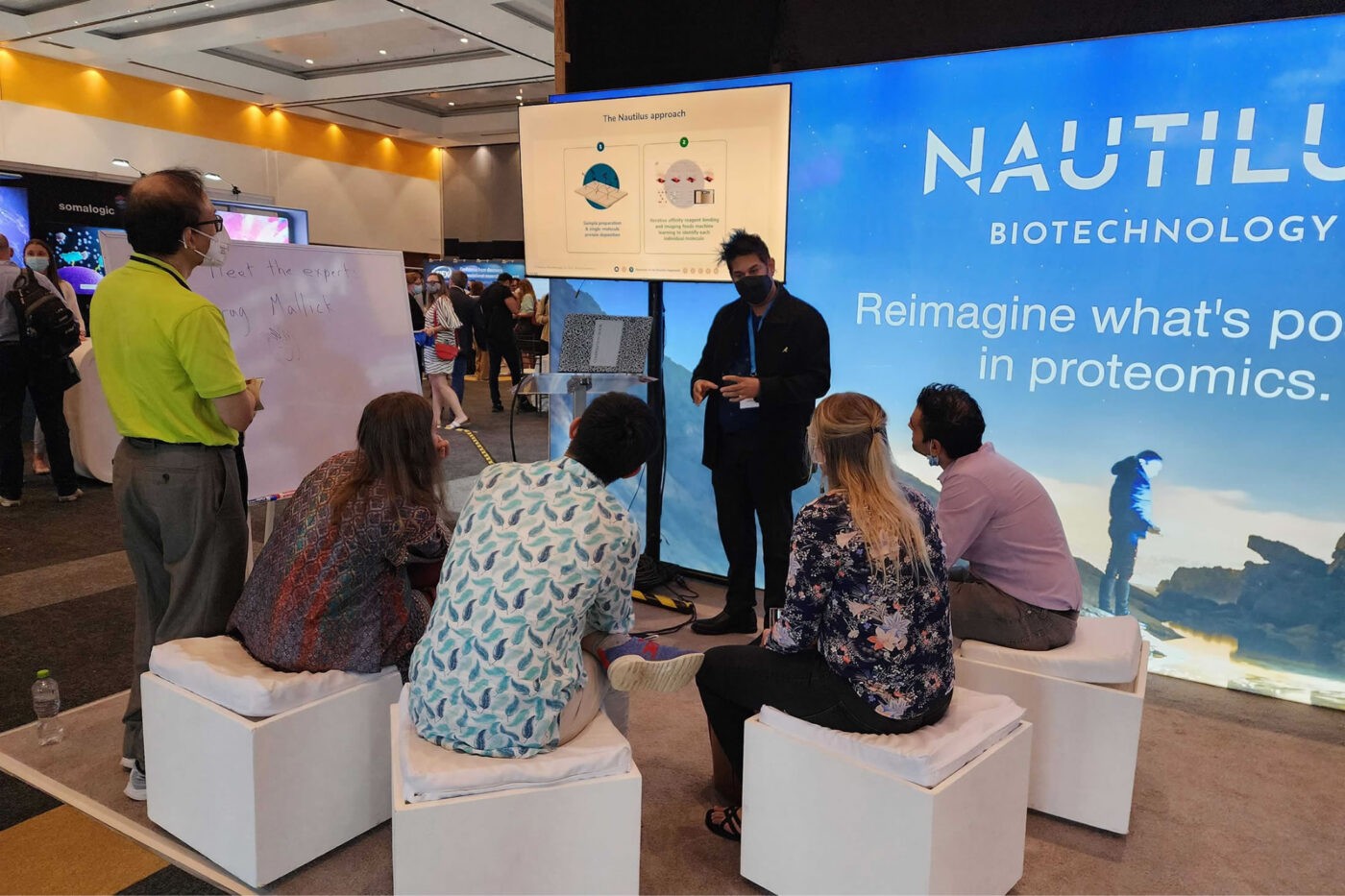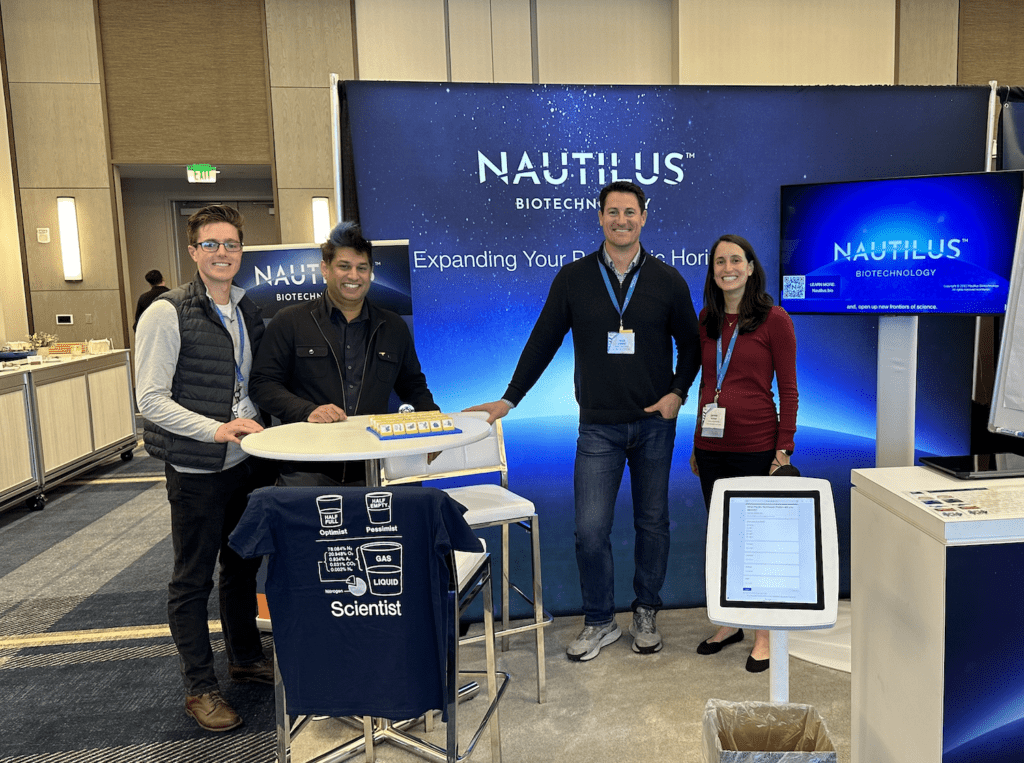The US Human Proteome Organization 2024 conference (US HUPO 2024) wrapped up last week and was nothing less than a tour de force of exciting developments in proteomics. Researchers are applying proteomic techniques across all facets of biology and are already making discoveries that will vastly improve our fundamental understanding of life’s molecular underpinnings.
Members of the Nautilus team, including Co-Founder and Chief Scientist Parag Mallick, attended US HUPO 2024 to share updates on our next-generation proteomics platform, learn from the community, and immerse ourselves in the latest developments from the field. The conference provided an energizing, illuminating look at the future of proteomics research — one that Nautilus is proud to be a part of.
We cannot highlight all the incredible researchers, findings, and technologies on display at US HUPO 2024, but we share some of our key takeaways below. Importantly, these takeaways are not just a snapshot of the conference but cover themes driving proteomics forward.
Proteoforms are having more than a moment
Proteoforms are the many versions of genetically encoded proteins produced in cells. Researchers have been elevating the importance of proteoforms and their impacts on biology for over a decade now, and it’s never been more clear that understanding proteoforms is critical to understanding life.
Researchers like Nicholas M. Riley from the University of Washington are deciphering the complex impacts of post-translational modifications like glycosylation on specific biological pathways. Meanwhile researchers like Hanno Steen from Harvard Medical School are seeing that it is crucial to look at the right proteoforms when identifying good protein biomarkers. All the while, trailblazers in mass spectrometry such as Luca Fornelli form the University of Oklahoma and Ryan Julian from UC Riverside are hard at work developing new top-down proteomics workflows to facilitate proteoform identification.
Northwestern University proteoform pioneer Neil Kelleher is making tremendous efforts to push for more resources and technologies devoted to the elucidation of proteoforms. He is actively working with leaders in the field and in DC to get funds for the creation of a human proteoform atlas that will map out the functional proteoforms active in the human body. He even hopes to make March 12 “Proteoform Day.”
Nautilus is proud to be at the forefront of technology development for proteoform analysis. In his lightning talk covering our efforts to quantify proteoforms on the Nautilus Platform, Nautilus Senior Director of Scientific Affairs and Alliance Management, Andreas Huhmer, went as far as to say, “There are no proteins in the proteome, only proteoforms.” This sentiment was mirrored in many sessions at the conference where researchers often asked questions like, “What proteoforms are you detecting with your technique?” or “How is this finding likely to be impacted by different proteoforms?” Clearly the importance of proteoforms has taken hold in the proteomics community.
Proteoforms explode the complexity of the proteome, but US HUPO 2024 made it clear that researchers are ready and eager to dive into that complexity. Their efforts will surely reap great rewards, not just in publications, but in a much better understanding of biology that will lead to novel diagnostics, treatments, and more.
A new wave of protein biomarkers is coming
While there are many studies on potential protein biomarkers for diseases ranging from cancer to Alzheimer’s, very few new biomarkers are entering the clinic. This is a huge problem for the field of precision medicine where biomarkers are needed to point patients to the right treatments, help researchers develop clinical trials, provide more accurate prognoses, and help physicians decide whether a treatment is even necessary.
In the past, many hoped that biomarkers would take the form of single proteins whose up or down-regulation would provide clear indications of underlying biology. This has not come to fruition, but newer proteomics technologies now give researchers the ability to simultaneously measure many proteins across conditions of interest. Proteomics researchers are leveraging these technologies to reveal multi-protein biomarkers with more potential than any single protein biomaker.
At US HUPO 2024, researchers like Towia Libermann, Toshiko Tanaka, and Hanno Steen demonstrated that they could identify promising multi-protein signatures of conditions such as IBD, aging, fragility, and Alzheimers. Furthermore, researchers are getting much better at establishing the controls necessary to make their biomarkers more specific to the condition of interest rather than simply showing that something is wrong.
Much work is needed to clinically validate biomarkers identified in studies like these, but proteomics technologies can aid in every step of the validation process. As next-generation proteomics platforms become higher throughput, more reproducible, more accessible, and better able to distinguish proteoforms, researchers will be able to put them to use to validate biomarkers in large numbers of patient samples quickly. This will make it possible to swiftly employ biomarkers for the benefit of all and bring the power of precision medicine to bear.
An explosion of proteomics data and analysis methods
Proteomics researchers are incredibly creative. Far from simply identifying the proteins present in their samples, they’ve developed many means of assessing protein abundance, pathway activity, protein-protein interactions, protein-drug interactions, protein stability, protein structure, post-translational modifications, and much more. This has led to the creation of mountains of data capturing all these important aspects of biology.
Critically, researchers are not just publishing their proteomic analyses but are sharing their source data widely. This profusion of proteomic data enables others to use the data to develop and test new hypotheses, benchmark new methods, and compare results. Thanks in no small part to Nautilus Founder and Chief Scientist Parag Mallick, who has worked tirelessly to advance proteomic data accessibility, proteomics researchers are exceptional at making their data available to one another to advance the field.
As Parag highlighted in his Gilbert S. Omenn Computational Proteomics Award lecture, the next step in advancing the utility of proteomics studies is to ensure that data analysis techniques are transparent, open, and shareable. This will make it so researchers continuously expand upon one another’s work, reproduce results as necessary, and tweak workflow parameters to generate new insights from older datasets.

While sharing analysis techniques in this way may seem like a daunting task, this is an incredibly collaborative community that is profoundly interested in discovering answers to important biological questions. That collaborative spirit and focus on biology should make it much easier to streamline current and future workflows to maximize the incredible impacts the field of proteomics can have on all aspects of biological research.
Researchers see the potential of the NautilusTM Proteome Analysis Platform

At US HUPO 2024, we had the opportunity to present new data coming fresh off the Nautilus Platform. We shared results from both our broadscale proteomics efforts and proteoform studies. You can find some of the most significant findings covering the precision and sensitivity of our next-generation proteomics platform and our efforts to quantify proteoforms here.
Even at this early stage of development of our novel proteomics platform, we are incredibly proud to showcase novel results that demonstrate the power of single-molecule proteomics. Things will only get more exciting and impactful from here and, while US HUPO attendees have shown great interest in our platform in the past, our early data clearly opened many people’s eyes to our potential. Many attendees commented that the capabilities of the platform really clicked for them after they attended our lunch seminar and saw the data presented above.
We are immensely excited to continue working with the members of the proteomics community to unleash the proteome and usher in a new wave of biological discovery.
Listen to the Translating Proteomics podcast for a fascinating discussion of the applications of proteomics
MORE ARTICLES



